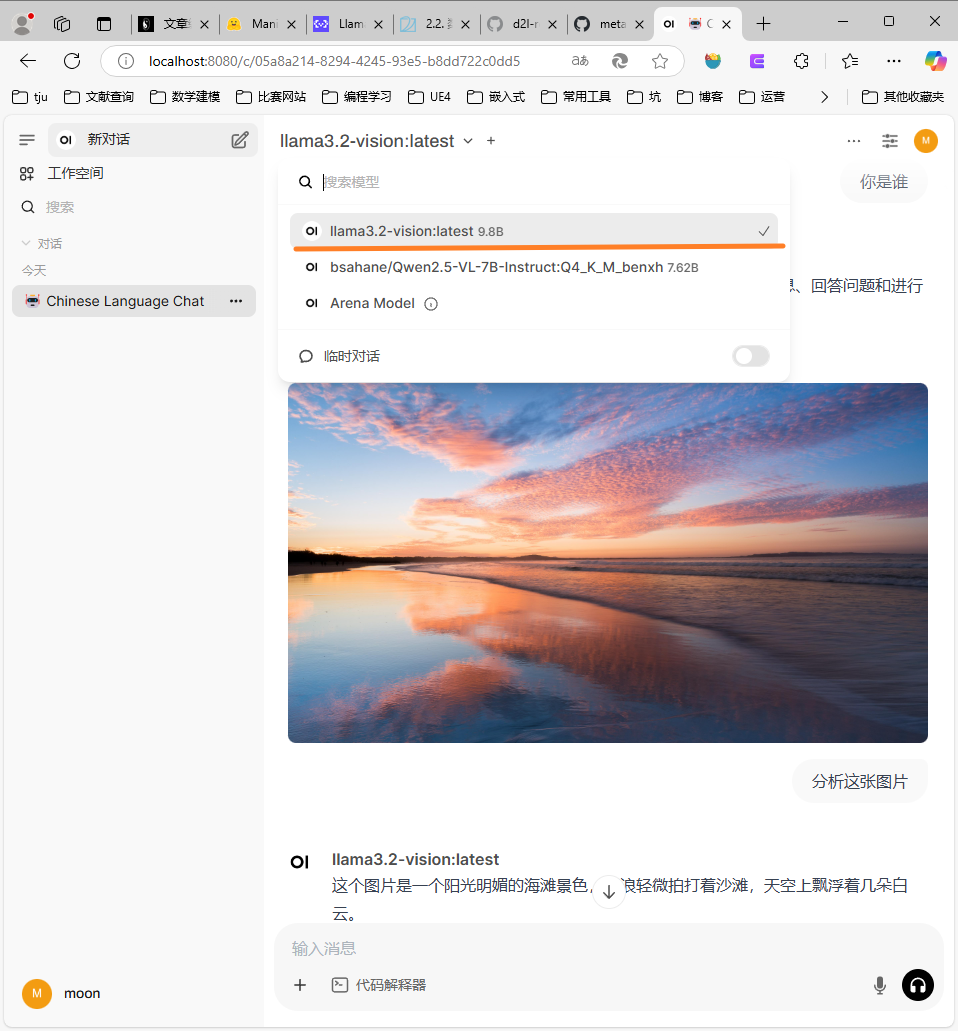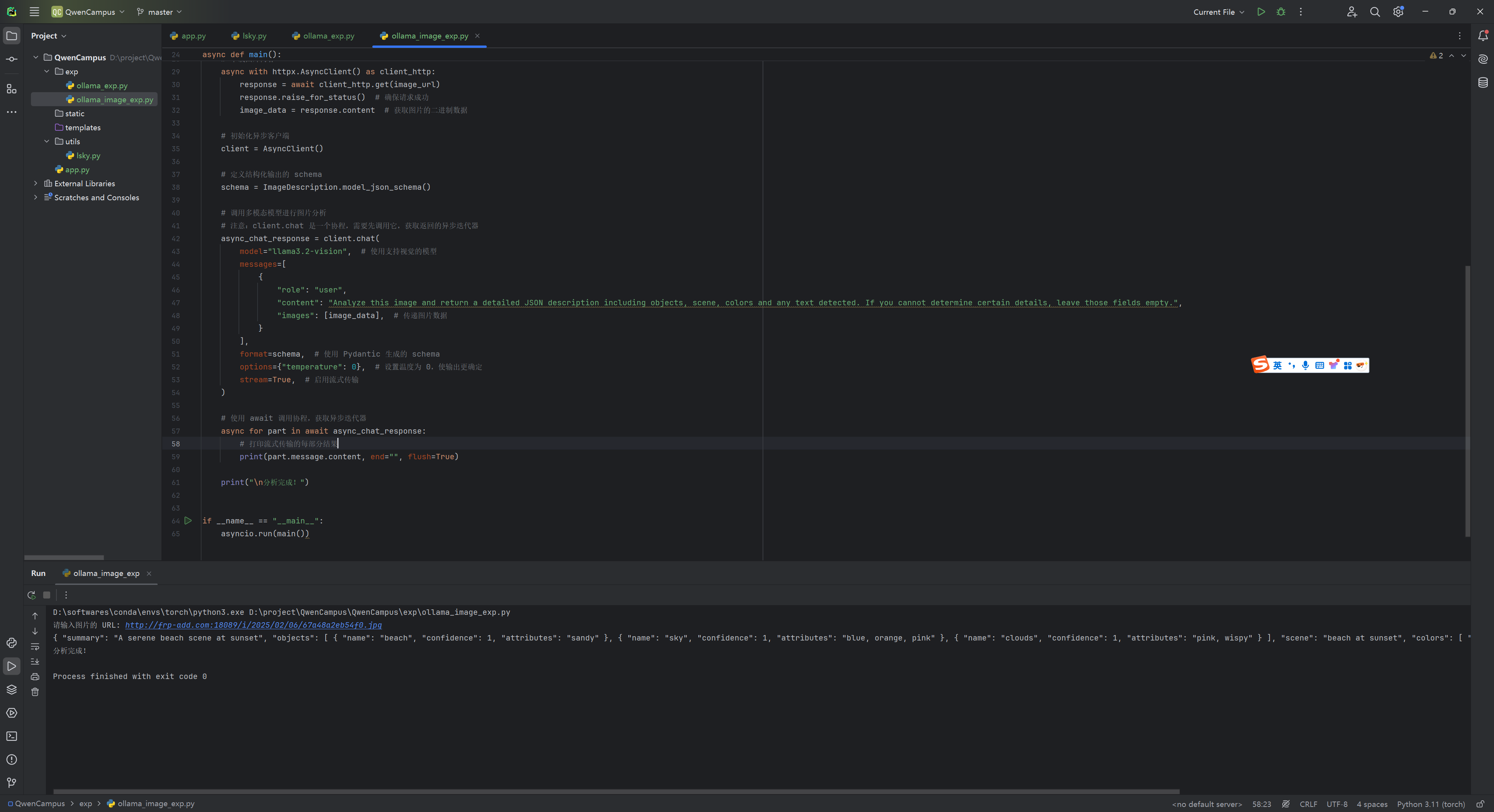模型部署系列(三)llama3.2-vision
本文最后更新于 2025-02-06,文章内容可能已经过时。
meta-llama/llama-models: Utilities intended for use with Llama models.
meta-llama/llama3: The official Meta Llama 3 GitHub site
Ollama下载模型
我们可以使用Ollama上的模型,也可以在HF或者ModelScope上下载safetensors后自行构建Ollama模型。
在cmd中使用命令拉取模型
ollama run llama3.2-vision下载完成后使用ollama list查看模型

在Open WebUI中使用

初步测试多模态能力是不错的
在Python中使用Ollama调用
以下是一个简单的通过Ollama Python API实现异步调用,并且支持流式传输和结构化输出。
import asyncio
import httpx
from pydantic import BaseModel
from ollama import AsyncClient
# 定义结构化输出的 Pydantic 模型
class Object(BaseModel):
name: str
confidence: float
attributes: str
class ImageDescription(BaseModel):
summary: str
objects: list[Object]
scene: str
colors: list[str]
time_of_day: str
setting: str
text_content: str | None = None
async def main():
# 获取网络图片的 URL
image_url = input("请输入图片的 URL: ")
# 下载图片内容
async with httpx.AsyncClient() as client_http:
response = await client_http.get(image_url)
response.raise_for_status() # 确保请求成功
image_data = response.content # 获取图片的二进制数据
# 初始化异步客户端
client = AsyncClient()
# 定义结构化输出的 schema
schema = ImageDescription.model_json_schema()
# 调用多模态模型进行图片分析
# 注意:client.chat 是一个协程,需要先调用它,获取返回的异步迭代器
async_chat_response = client.chat(
model="llama3.2-vision", # 使用支持视觉的模型
messages=[
{
"role": "user",
"content": "Analyze this image and return a detailed JSON description including objects, scene, colors and any text detected. If you cannot determine certain details, leave those fields empty.",
"images": [image_data], # 传递图片数据
}
],
format=schema, # 使用 Pydantic 生成的 schema
options={"temperature": 0}, # 设置温度为 0,使输出更确定
stream=True, # 启用流式传输
)
# 使用 await 调用协程,获取异步迭代器
async for part in await async_chat_response:
# 打印流式传输的每部分结果
print(part.message.content, end="", flush=True)
print("\n分析完成!")
if __name__ == "__main__":
asyncio.run(main())使用同样的图片调用结果如图所示

- 感谢你赐予我前进的力量
赞赏者名单
因为你们的支持让我意识到写文章的价值🙏
本文是原创文章,采用 CC BY-NC-ND 4.0 协议,完整转载请注明来自 Moon
评论
匿名评论
隐私政策
你无需删除空行,直接评论以获取最佳展示效果

